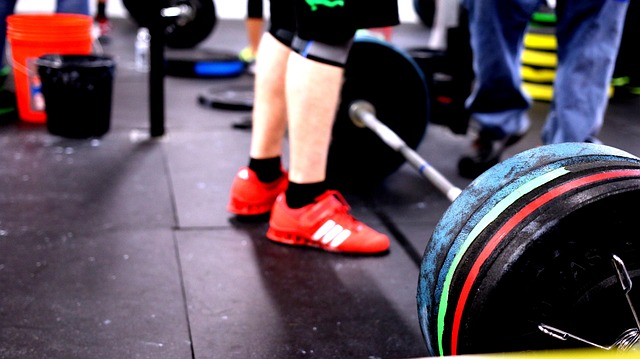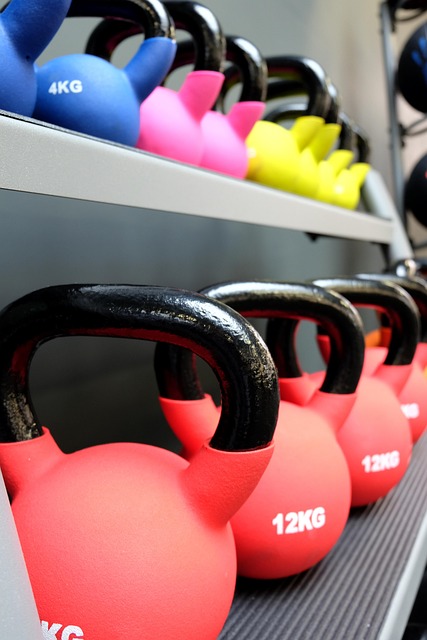Before setting up a home gym, assess your fitness needs, budget, and space to make informed decisions on essential residential gym equipment. For newcomers, consider multi-functional pieces like dumbbells, pull-up bars, resistance bands, and adj…….
Category: fitness 101
Fitness 101: A Comprehensive Guide
Introduction
In an era where health and wellness are at the forefront of global discourse, ‘Fitness 101’ emerges as a foundational concept, serving as a roadmap for individuals seeking to lead active and healthy lives. This article aims to unravel the multifaceted aspects of Fitness 101, offering readers a comprehensive understanding of its core principles, impact, and role in shaping the wellness landscape. By exploring various facets, from historical roots to technological innovations, we will illuminate why this subject is not just a passing trend but a crucial element in achieving optimal well-being.
Understanding Fitness 101: Unveiling the Basics
Definition: Fitness 101 refers to an all-encompassing approach to physical and mental health, emphasizing holistic wellness through regular exercise, proper nutrition, and mindfulness practices. It is a beginner’s guide to cultivating a lifestyle that promotes longevity, enhances performance, and improves overall quality of life.
Core Components:
- Physical Exercise: This involves a combination of cardiovascular workouts, strength training, flexibility exercises, and sports activities. The goal is to improve endurance, build muscle, and maintain joint health.
- Nutrition: A balanced diet is fundamental, focusing on whole foods, adequate hydration, and proper portion control. It educates individuals about macronutrients, micronutrients, and their impact on overall fitness.
- Mindfulness and Mental Health: Fitness 101 incorporates stress management techniques, meditation, and mindfulness practices to optimize mental well-being. This aspect emphasizes the mind-body connection, crucial for achieving holistic fitness.
Historical Context: The concept of ‘Fitness 101’ has evolved over centuries, reflecting societal changes and growing awareness of health issues. Ancient civilizations emphasized physical training through military drills and athletic competitions. The Renaissance period saw a resurgence in interest, with focus on proportional body development. In modern times, the fitness industry has grown exponentially, driven by scientific research, technological advancements, and a global movement towards proactive health management.
Global Impact and Trends: A World of Wellness
Fitness 101 has transcended geographical boundaries, leaving an indelible mark on various cultures worldwide. The global fitness market, valued at USD 324.6 billion in 2021, continues to grow at a CAGR of 9.5% (Grand View Research, 2022). This growth is driven by increasing health consciousness, rising disposable incomes, and the rise of digital fitness platforms.
Regional Variations:
- North America: Known for its advanced fitness technologies and boutique studios, North America leads in premium fitness experiences. The region also promotes outdoor activities, reflecting its diverse landscapes.
- Europe: With a strong focus on sports culture and community engagement, Europe embraces inclusive fitness initiatives. Countries like Germany and the UK are hubs for fitness innovation, hosting global events and influencers.
- Asia-Pacific: This region is witnessing rapid growth in fitness startups and mobile health applications. Countries like China and India are investing heavily in wellness infrastructure, reflecting a shift towards preventive healthcare.
- Middle East & Africa: The MEA region is experiencing a surge in fitness awareness, with an emphasis on community centers and group exercises. This can be attributed to changing lifestyles and growing urban populations.
Economic Considerations: Fitness as a Global Industry
The fitness industry’s economic impact is profound, influencing various sectors.
Market Dynamics:
- Global Market Size: As mentioned, the global fitness market is immense and continues to expand. This growth is fueled by increasing demand for personalized training, yoga, and wellness retreats.
- Regional Disparities: Developed countries tend to have larger market shares due to higher disposable incomes and advanced healthcare infrastructure. However, emerging markets are witnessing rapid growth rates, driven by rising health awareness.
Investment Patterns: Major investments are directed towards:
- Fitness Equipment Manufacturers: The demand for home gym equipment and wearable fitness devices has soared, leading to substantial investments in R&D.
- Digital Fitness Platforms: Apps and online fitness communities have attracted significant funding, leveraging technology to provide accessible fitness solutions.
- Wellness Real Estate: Spas, yoga studios, and sports facilities are experiencing increased investment, reflecting the growing demand for wellness spaces.
Role in Economic Systems: The fitness industry contributes to economic growth through:
- Job Creation: From personal trainers to gym managers, it employs millions worldwide, contributing to local economies.
- Tourism: Wellness retreats and sports tourism attract visitors, boosting travel and hospitality sectors.
- Product Sales: Nutraceuticals, athletic wear, and fitness equipment industries thrive due to the industry’s popularity.
Technological Advancements: Revolutionizing Fitness
Technology has been a game-changer in the fitness realm, transforming how individuals approach their health.
Key Innovations:
- Wearable Devices: Fitbits, Apple Watch, and other wearables track steps, heart rate, and sleep patterns, providing users with real-time data for informed decisions.
- Mobile Fitness Apps: Applications like MyFitnessPal, Nike Training Club, and Headspace offer personalized workout plans, nutrition guidance, and mindfulness practices.
- Virtual Reality (VR) and Augmented Reality (AR): VR gyms and AR fitness games are immersive experiences that make workouts engaging and accessible.
- Telehealth and Online Coaching: Remote personal training sessions and virtual fitness communities break down geographical barriers, providing access to experts worldwide.
Impact on Fitness 101: Technology has democratized fitness, making it more accessible, personalized, and measurable. These advancements cater to diverse preferences, allowing individuals to engage in Fitness 101 at their own pace and convenience.
Policy and Regulation: Shaping the Wellness Landscape
Governments and regulatory bodies play a critical role in promoting healthy lifestyles through policy interventions.
Key Policies:
- Public Health Initiatives: Governments worldwide implement fitness and nutrition programs in schools, promote active transport, and fund community sports facilities to encourage physical activity.
- Food Labeling: Standardized food labeling ensures consumers make informed dietary choices, aligning with nutritional guidelines for a balanced diet.
- Workplace Wellness Programs: Many organizations offer incentives for employees participating in wellness challenges, promoting fitness in the corporate sector.
Legislative Frameworks:
- Fitness Equipment Standards: Regulations ensure product safety and quality, protecting consumers from faulty equipment.
- Data Privacy Laws: With the rise of digital fitness platforms, data privacy laws safeguard user information, fostering trust in online health services.
- Nutrition and Health Claims: Regulatory bodies oversee claims made by food and supplement manufacturers to prevent misleading information.
Challenges and Criticisms: Navigating the Hurdles
Despite its widespread benefits, Fitness 101 faces challenges that require strategic solutions.
Main Challenges:
- Inaccessibility: Despite technological advancements, fitness resources remain out of reach for many due to cost or geographical constraints.
- Lack of Personalization: One-size-fits-all approaches may not cater to individual needs and preferences, leading to poor adherence.
- Misinformation: The abundance of information online can be overwhelming, and false health claims often confuse consumers.
- Time Constraints: Modern lifestyles often leave individuals with limited time for dedicated workouts, posing a challenge for consistent fitness practices.
Proposed Solutions:
- Inclusivity Initiatives: Governments and businesses should collaborate to provide affordable access to fitness facilities and programs, targeting underserved communities.
- Personalized Fitness Platforms: Leveraging technology, create algorithms that offer tailored workout and nutrition plans based on user data.
- Digital Literacy Programs: Educate individuals on evaluating online health information, promoting critical thinking in a digital age.
- Flexibility and Integration: Encourage short, intense workouts or active lifestyle choices integrated into daily routines to accommodate busy schedules.
Case Studies: Real-World Success Stories
Case Study 1: South Korea’s National Fitness Program
South Korea’s ‘National Fitness Program’ is a comprehensive initiative that promotes physical activity and healthy lifestyles among its citizens. The program offers free or subsidized access to public sports facilities, provides online workout videos, and organizes community fitness events. This holistic approach has led to increased participation in sports and improved overall health indicators (World Health Organization, 2020).
Case Study 2: The Impact of Headspace on Mental Fitness
Headspace, a popular meditation app, exemplifies the power of digital tools in mental fitness. By offering guided meditations, mindfulness exercises, and sleep assistance, Headspace has helped millions manage stress, improve focus, and enhance overall well-being. This case study highlights the growing acceptance of digital solutions in Fitness 101 (Headspace, 2023).
Case Study 3: Corporate Wellness Programs in Japan
Japanese companies like Toyota and Sony have implemented successful wellness programs, prioritizing employee health and productivity. These programs include on-site fitness classes, healthy meal options, and stress management workshops. By fostering a culture of well-being, these companies have achieved higher job satisfaction rates and improved overall performance (Japan Business Federation, 2019).
Future Prospects: Looking Ahead in Fitness 101
The future of Fitness 101 is filled with potential growth areas and emerging trends.
Growth Areas:
- Personalized Nutrition: With advancements in genomics, personalized nutrition plans will become more precise, catering to individual genetic predispositions and lifestyle factors.
- Virtual Reality Fitness: Immersive VR experiences will continue to grow, offering engaging and interactive workouts for various fitness levels.
- Mind-Body Practices: The integration of yoga, mindfulness, and meditation into mainstream fitness routines will likely increase, reflecting their benefits for mental health.
Emerging Trends:
- Wearable Technology Evolution: Future wearables will be more sophisticated, providing advanced biometric data and predictive analytics to guide personalized training.
- AI-Driven Coaching: Artificial intelligence will play a larger role in coaching, offering real-time feedback and adaptive training plans based on user performance.
- Community-Based Fitness: There will be a renewed focus on community engagement, with local fitness groups and events fostering social connections through shared wellness goals.
Conclusion: Empowering Individuals, Transforming Lives
Fitness 101 is not merely a trend but a powerful movement that empowers individuals to take control of their health and well-being. By combining physical exercise, nutrition, and mental health practices, it offers a holistic approach to living a balanced and active life. As the global fitness landscape continues to evolve, the principles of Fitness 101 will remain relevant, guiding individuals towards optimal health and a better quality of life.
FAQ Section: Answering Common Queries
Q: How do I start my fitness journey if I’m a beginner?
A: Begin with small, achievable goals. Start with a combination of brisk walking, basic strength training, and stretching. Explore various fitness activities to find what you enjoy. Consistency is key; aim for regular, moderate-intensity workouts.
Q: Is it necessary to join a gym to stay fit?
A: Not necessarily. You can achieve fitness goals through home workouts, bodyweight exercises, or outdoor activities like hiking and cycling. However, gyms offer structured environments and equipment, making them ideal for those seeking guidance and variety.
Q: How do I stay motivated during my fitness routine?
A: Set specific, measurable goals and track your progress. Vary your workouts to avoid boredom. Find a workout buddy or join online communities for support and accountability. Celebrate non-scale victories like improved energy levels and better sleep.
Q: Can technology replace personal training?
A: Technology can provide valuable guidance and motivation but may not offer the same level of personalized coaching as a certified trainer. While apps and devices can teach exercises, a professional can ensure proper form and provide tailored advice based on your needs.
Q: How does nutrition fit into Fitness 101?
A: Nutrition is a cornerstone of Fitness 101. Balanced eating supports physical activity by providing energy, promoting muscle recovery, and enhancing overall health. It’s about nourishing your body to support your fitness goals and well-being.
Optimize Your Home Gym Space with Efficient Equipment Placement
Designing a dream home gym starts with understanding your fitness needs and equipment requirements, such as cardio or strength training gear. Calculate space needed for each piece, considering safety clearances, and include storage solutions. In…….

